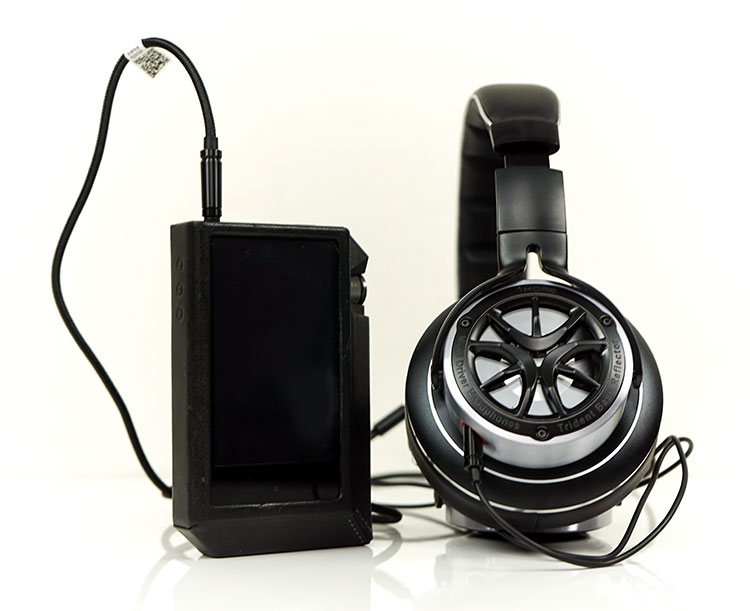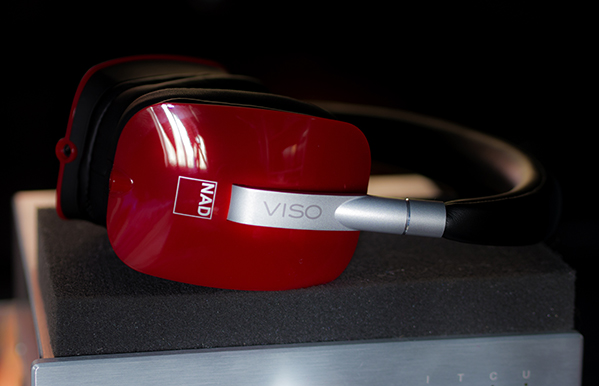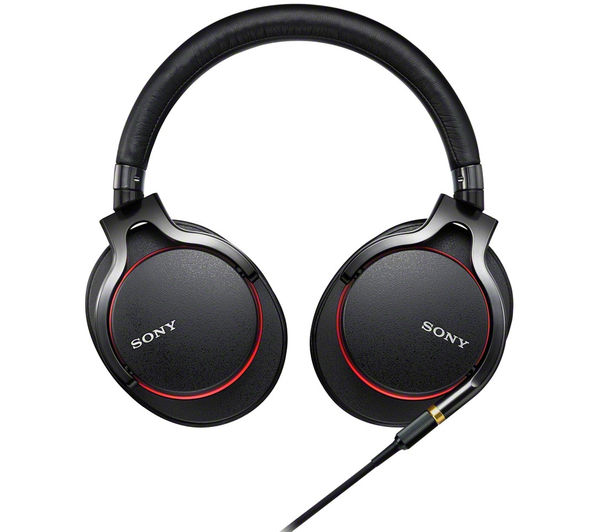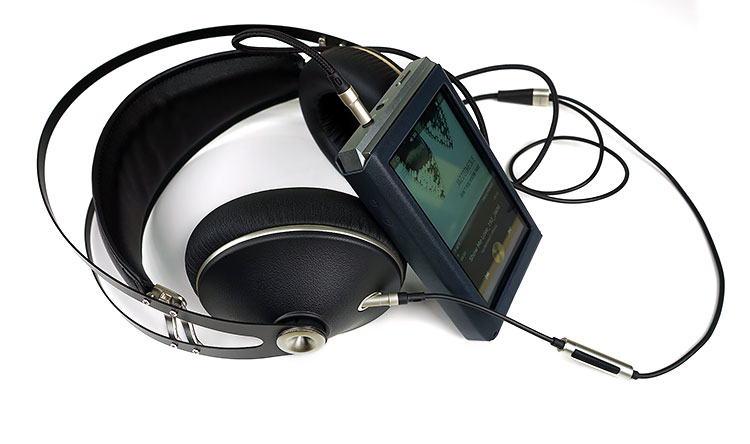Sound Impressions
Tonality & Presentation
The 1MORE Triple Driver headphones follows a moderate ‘M-shaped curve’ with varied levels of elevation in the mid-bass, vocal range and the upper treble where that tweeter really kicks in. It delivers a slightly warm but otherwise natural tone with a much bigger soundstage than I anticipated from a 40mm based portable headphone.
The 40mm driver itself sounds fairly neutral to my ears with the bass reflector kicking in 20-30Hz and rising to about 100Hz and a very high crossover point of around 10kHz where the ceramic plate kicks in providing a lot of air and sparkle. This is a clean and very good performing driver by the way. It does tremendously well with high levels of midrange detail, convincing instrumental separation and accurate imaging.
And that’s the thing about this headphone that surprises me the most is how well the triple driver configuration maximizes what should be a relatively limited amount of headroom for a can of this size. It is not quite an out of your head experience but it lacks that intimate front and center experience I get from other on-ear smaller cans I have tried before. From what space there is the Triple Driver works it very well indeed with some accurate imaging and an above average holographic presentation for a closed headphone at this price point.
Bass
The Triple Driver low-end is impactful without being overly dominant and bloated sounding. It rises from around 30Hz and peaks at 100Hz before it drops rather quickly to around 400-500Hz. It then rises and peaks throughout the lower-mids to around 1k. Two things from this. The first is that marked dip post 100Hz stops a bit of bass bleed but also doesn’t provide an overly coherent transition into the lower mids. The second is that it leaves from welcome space for the midrange to breathe and shine.
In short, it sounds disconnected a little despite sounding fairly punchy and musical in its own right with decent sub-bass presence or power. The dip sort of reminds me a little of the DT1770 frequency response though not as exaggerated. Perhaps being tuned by a studio engineer some of that thinking came into play in terms of “hearing the bass” clearly.
Mids
The clarity on the midrange is just excellent on the Triple Driver headphones. There is some rising warmth from the lower mids into the vocal presence which is slight but critically prevents the sound from being cold or overly neutral sounding. Instrumental timbre has a natural tone with enough body to sound accurate but not too much to sound overly thick to muddy sounding.
Vocals come slightly further forward and just enough to skew the stage slightly with instruments behind and to the side and well separated. In fact, instrumental separation and the ability to deliver a fairly convincing 3-dimensional presentation is the star of the show for me with this headphone. Spatial cues, even nuanced and fleeting ones, seem very precise and clear to me though not overly forward sounding.
Treble
Treble up to 10Khz is handled by the mylar driver then the ceramic tweeter takes over for the final octave in the Triple Driver Headphones frequency response. There is a bump around 3k and then a dip and gradual rise to 8-10k.
It does not have a pronounced lower treble emphasis so it avoids sounding overly splashy or sibilant. There is a slight upper harmonic order bias with the tweeter energy kicking in so it has a slight lack of body in higher-pitched percussion timbre making it sound more ethereal than weighty.
On the flipside, the Triple Driver headphones treble does sound pacy and very articulate with excellent levels of headroom and air for a closed headroom. In some ways, it reminds me a little of how the AEON closed back design aimed for more sparkle and air only just not quite as emphasized around 7-8k.
Matchability
Efficiency
The 1MORE Triple Driver headphones are rated at a relatively modest 32Ω and 104dB sensitivity. That is sensitive enough to drive off most sources including smartphones, DAPs, and portable amps. It is also fairly stubborn to higher noise floors that you tend to get with some portable analog amps so it unlikely you will hear any background hiss with high-powered amp signals.
That is not to say the Triple Driver headphones are as efficient as IEMs. They do need a bit more juice to sound optimal and you will find on smartphones pushing it up to about 80% volume (LG G6) and closer to 40 – 45 on the Onkyo Granbeat in low gain.
Synergy & Amping
Regular smartphones lack a bit of dynamic range for me with the Triple Driver and whilst clean and clear they sound much too polite. You would be better off with something like the Onkyo Granbeat which is the best audiophile grade smartphone in the market today. The dynamic range is much improved with a snappier low-end and much better staging.
For DAPs, I did find some interesting matches out there and the Triple Driver does have some changes to its tonal bias depending on the DAP you use. It’s 32Ω rating also means you are unlikely to get any low-z impedance response skew with the 10Ω output rating of the HiBy R6 jack.
Satisfying DAP matches included the Granbreat, AK240/380, DX200, and the DX150. All of these sources filled in the midrange nicely and got that mylar driver sounding really good. You might also get some more nuanced differences depending on which DAP you use. I found the AK380 and the HiBy R6 to produce a slightly smoother tweeter response in the upper treble whereas the DX150 was more energetic sounding but not quite as refined.
Select Comparisons
Nad-Visio HP50
$249
Technical
Its been pushing over 5 years now since the HP50 first came out and it is still a relevant headphone today though with a lot more competition. This is a large supraaural headphone that folds flat as opposed to the Triple Driver which folds inwards. It is also a mix of plastics and metal but in truth the 1MORE variant has a lot more metal and generally a more advanced design than the HP50.
Despite their slightly narrower and longer pads which I feel are not quite as comfy as the rounder Triple Driver pads, they do isolate a little better. I suspect the pad materials may be at play here as both do cover the ears and both use memory foam with a good seal.
The 1MORE Triple driver is a dual entry cable system with a 2.5mm TRS in each cup whereas the NAD HP 50 is a little more flexible than that. It has two entries, one in each cup, but it is a single entry wired system meaning you can stick the single 3.5mm 4-pole jack into any cup and it will work. A nice touch. It also as an additional cable with remote inline mic and playback as well as one that just does the audio.
Both have a main 40mm driver though the HP 50 uses a single driver configuration compared to the 1MORE Triple Driver config. That does make a bit of a difference in the final presentation.
Performance
Tonally there are some differences. The HP 50 is just a little thicker sounding in the low-end with more sustained elevation from the mid-bass to upper bass into the lower-mids. It has a thicker note and a little more bloom as a result. Both have an excellent mid-bass impact though I find the sub-bass of the Nad to be a little more visceral and not quite as controlled as the 1MORE Triple Driver response.
The Triple Driver dips more substantially in the upper bass and lower mids before rising to a slightly forward vocal presence around 1k. The Nad HP50 does not dip and keeps the lower mids warm and full sounding. Vocals are further forward on the Nad compared to the more neutral positioning of the 1MORE Triple Driver vocal presence but both have a refined and smooth vocal delivery.
Treble on the Nad is a bit more subdued on the lower end and peaks quite quickly around 6-8k. The triple driver has a bit more upper mids presence and lower treble energy and also a burst of energy around 8-10k. Both have some upper treble sparkle but comparing both the 1MORE is just a little airier sounding and more articulate.
The Nad staging is a bit more forward sounding and intimate with a particular focus on vocals. The 1MORE delivers something a little more spacious and neutral sounding in the mids with slightly better width and instrumental separation. The Nad delivers in depth and will be the fuller sounding and warmer of the two.
Sony MDR-1A
$299.99
Technical
The 1A has been around a few years also, much like the NAD and its street price does vary a lot with Amazon sometimes selling for as low as $200. The premise is much the same though this is a single entry supraaural as opposed to dual entry and it folds flat rather than inwards so it seems bigger.
Both have 40mm main drivers and both have reasonable levels of isolation though side by side the Triple Driver has the edge over the Sony. The Sony is more plastics than metal in its materials so it’s almost 70g lighter than the Triple Driver at 225g versus 293g. Both are very comfy to wear with medium clamping pressure and good pressure distribution on the head.
Performance
Quite different in presentation though in terms of power and volume there is very little volume adjustment required when switching between them. You can really tell where 1MORE have applied a little coloration and elevation in the FR of the Triple Driver compared to the Sony.
The Sony immediately sounds a little flatter and not as punchy or as tight sounding as the Triple Driver. Technically, its bass response is elevated but quite linear with no perceived heavy mid-bass elevation so it is not as punchy or deep sounding as the 1MORE headphones.
Bass to lower mids transition is also dipped but not as marked as the Triple Driver so despite its slightly flaccid bass response it does have a fairly smooth transition into the midrange. Its vocal presence is also way more neutral to with very little if any elevation around 1k. The Triple Driver Headphones is not hugely forward sounding either but certainly has much more focus and energy than the Sony.
Treble on the Sony is actually quite smooth though lacks a little upper treble energy compared to the 1MORE Triple Driver. You can literally hear that ceramic tweeter at work with its quick-fired clean delivery whereas the Sony drops away a little. The Sony is not quite as airy sounding and not as articulate but it still retains a fairly natural feel to its top-end signature. Put it this way its not dark sounding.
Meze 99 Neo
$249
Technical
Despite being a fairly portable headphone the 99 Neo is much more rigid in design with no foldable components and just a slight swivel for comfort and fit once on your head. Technically I would class it as circumaural as opposed to supraaural as it does go well over the ear rather than rest on it compared to the Triple Driver headphones.
As such as the Triple Driver is a little bit more suited to travel and on-the-go use than the 99 Neo. The Meze headphone does seal and isolate just a little bit better for me than the 1MORE, especially for higher frequency background noise given its large cup and pad size.
Like the 1MORE Triple Driver the 99 Neo is a dual entry system but like the Nad HP50, it is left-right agnostic meaning the left and right duties are in the cable and not the cups. You can put it in any socket you like and just refer to left and right from the connector jacks. The 99 NEO does have an additional cable for remote playback and mic control.
Performance
The 99 Neo is a 40mm dynamic driver headphone rates at a very efficient and easy to drive 26-ohms and 103dB. It is a little easier to drive than the 32Ω/104dB 1MORE despite the relatively similar sensitivity levels you do need about 1-2dB more gain on most DAPs to volume match effectively.
Both perform very well with higher noise floors form portable amps and both have mild scaling benefits from better quality amp signals and sources. The 99 NEO will be affected a bit more with amp outputs with higher impedance and will lose a touch more bass impact and quantity from the likes of the Shanling M2s and HiBy Music R6.
Tonally the 99 Neo is a little darker sounding than the Triple Driver Headphones with less air and a vocal presence that sits further back. Its low-end is a little more elevated and carries the same level of quantity around the 50-100Hz mark so it is punchy enough but it carries that elevation a bit further and doesn’t dip as much into the mids. The brings a fair bit of warmth into the lower midrange and sounds a bit more diffuse compared to the more precise and controlled impact of the 1MORE Triple Driver.
Mids are cleaner, more neutral and spacious sounding on the Triple Driver. The 99 Neo beefs up the body a bit more with a richer timbre but a fuzzier instrumental placement and imaging that is just ok but nothing as dynamic and engaging as the 1MORE. Treble on the both have a similar rise from 8-10k with some nice sparkle and air but lower treble on the 99 Neo is much more dipped and muted so percussion timbre doesn’t quite have the snap and presence compared to the 1MORE.
Our Verdict
IEMs are getting so good I had been running around predicting the demise of the portable headphone market these last 2 years. Whilst I still do not think it will ever get as popular as several years ago, portable headphones such as the 1MORE Triple Driver Over-Ear Headphones do prove that a well-made portable headphone can sound very good indeed and also look the part.
I am impressed with the tuning. There is a slither of studio heritage in the response curve, particularly with that post Mid-bass dip but apart from that this is a clean, clear and very articulate sounding portable headphone. Importantly, it does not sound like a “small headphone”. Staging is above par for a 40mm driver on-ear no doubt helped by the additional drivers to cope with energy and detail at both ends of the spectrum.
Visually it is a treat and one of the nicest looking portable on-ear I have seen in a while. The packaging is pretty darn good also. It is one of those rare occasions where I think a manufacturer has got the pricing and value point spot on. This is an obtainable and pleasurable sounding headphone.
Triple Driver Over-Ear Headphones Specifications
- Color: Titanium
- Weight: 293 g
- Wire: Oxygen-free Copper
- Cable Length: 1.35 m
- Plug Type: 3.5 mm Gold Plated
- Speaker Impedance: 32 Ω
- Sensitivity: 104 dB
- Frequency Response Range: 20-40,000 Hz
- Maximum Power: 50 mW







